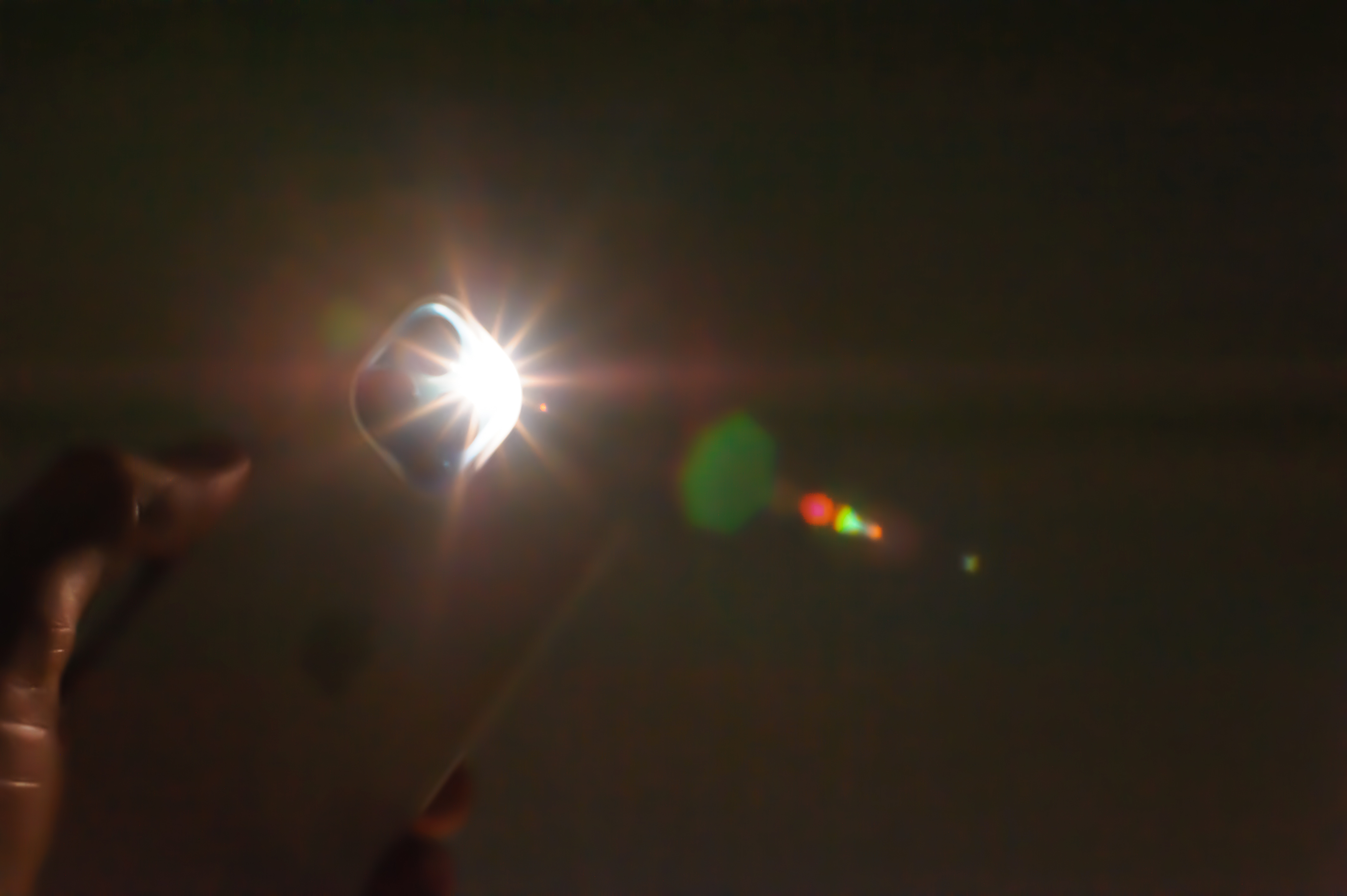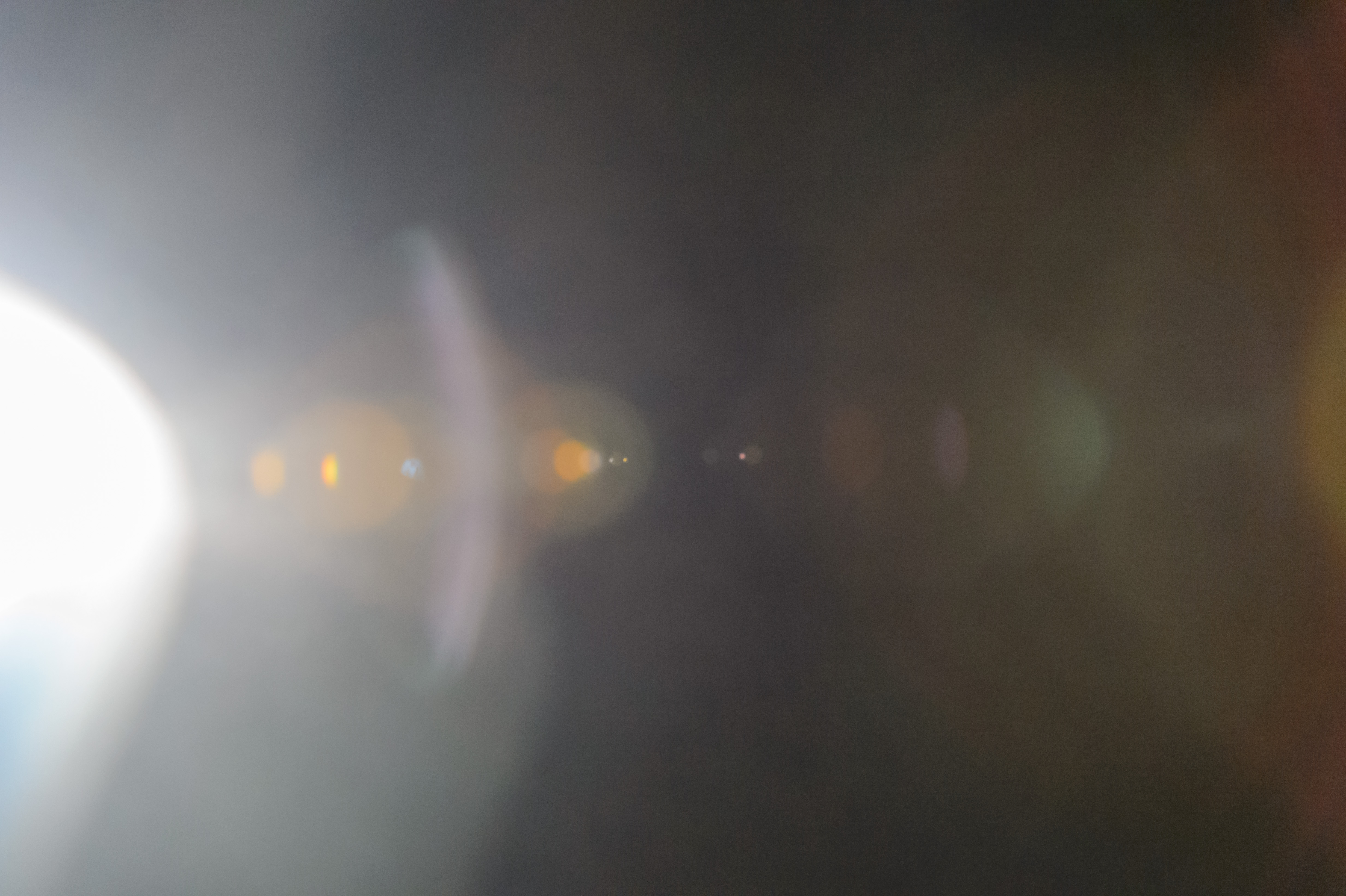Lens flare is bright areas of light in your image, that you do not find in reality! It is caused by the way light hits the front side of the glass in the lens and is scattered inside the lens.
Here below I have taken a shot of me holding my iPhone up in the dark and taking a picture of it. You see leftmost a hectogon shaped green light (the same shape as the aperture blades) followed by several colored bright spots. This is flare. None of these were there when I studied my iPhone with the naked eye:

If the light comes into the lens from a very steep angle, then the result can be a milky white area – sometimes covering the entire frame. And the contrast in that area is significantly reduced – things appear to be washed out.

If you want a good test if your lens has flare, go out at night, find a tall lamppost and point your lens towards it. Move the light from the lamppost in and out of the frame to provoke flare. You will probably be able to get some flare effects, especially if you leave the lens hood at home and choose a zoom lens. Zoom lenses have more complicated constructions than primes and tend to produce flare more easily.
Some love flare. In my experience, videographers love flare. When you watch TV or go to the movies, you will quickly spot flare used as a creative tool. It certainly underlines the strength of the sun on a sunny day. Also some photographers love flare, they even add it to the image in post processing!
Others do not love flare so much. If you want realism in your photos, the flare is to be avoided, as it is a thing created by your lens. It sort of gives away that a lens was part of producing the image.
Some lens constructions are better at reducing flare than others. Modern coating of the lens glass greatly reduces flare, but cannot eliminate it fully. Zoom lenses have more complicated constructions and are hence more prone to flare – primes less so. And finally, you can use a lens hood to reduce the flare. I sometimes even hold the hand against the sun to protect my lens from getting the light that produces flare.
In my opinion there is no right and wrong when it comes to flare. It is a creative tool. The problem comes when it is there and you don’t want it or the other way around. But hopefully this article has given you some ideas what to do in these cases.
Thank you for reading this far! Questions and comments are more than welcome!
